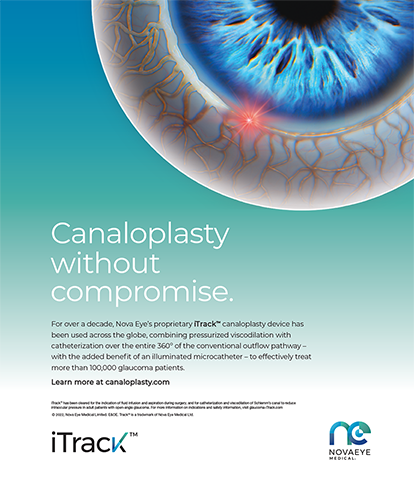We all know the feeling—a nice, pleasant cataract operation is proceeding smoothly when—pop! The posterior capsule opens, vitreous jumps up, the nucleus slithers to the side, and your stomach begins to knot. No one knows how often this happens; however, it clearly occurs more often with some surgeons than others. Studies from residency programs peg the incidence at about 5% among surgeons in training. Every manufacturer's representative tells the tale of the apocryphal surgeon who loses vitreous in the majority of his cases. I have aided in retraining two established surgeons who lost surgical privileges when their incidences exceeded one-third. On the other hand, I know a colleague who routinely performs thousands of cases without losing vitreous. That shows it can be done, and I have been trying to achieve a rate that low, too. Although I have not reduced my rate to one in 1,000, I am almost there, running about 0.15% for the past several years. Here are what I consider to be the keys in my struggle to make the torn capsule a rarity: fluidics, nucleus loosening, and nucleus relocation.
FLUIDICS
When the surgeon is able to create a steady state within the anterior chamber, the reward is stability for the nucleus and the capsule. Everything stays where it should. Surprises disappear, capsules don't bounce, and nuclei don't fly.
Achieving the steady state depends on incision control and machine fluid balance. The incision should be only as large as the needle/sleeve combination that the surgeon is using. The fit should be snug and as watertight as possible. To prevent incision burns, marry a snug incision with one of the cool-tip systems, such as the MacKool (Alcon, Fort Worth, TX), the Microseal (Bausch & Lomb, Claremont, CA), the Microflow (Bausch & Lomb), or any of the derivative systems available from every manufacturer. It is difficult to get a good, safe seal when using a standard straight phaco needle because of the fluid leakage needed for tip cooling.
All modern phacoemulsification machines have wonderful fluidic capabilities, but it is necessary for the surgeon to use them properly. Consulting with the manufacturer's representative or with surgeons using similar systems will alert the surgeon to modest, conservative settings that will be effective and unassuming. I use the Millennium (Bausch & Lomb) with dual-linear control. When sculpting, I use low vacuum power, and I increase it only as necessary to remove a dense segment. I am able to balance power and vacuum for maximum control by moving my foot up and down for power, and left to right for vacuum. This lets me use only as much power as needed at the moment, which helps to maintain stability. Naturally, other systems have their own methods of maintaining stability, and those parameters are available to you.
NUCLEUS LOOSENING
Nucleus loosening is more than hydrodissection, it is using enough hydrodissection to loosen the nucleus to the extent that you can rotate it with the cannula. A token squirt of water under the capsule is not enough; a capsule breaks less often when the nucleus is not attached to it.
I use the Corydon cannula designed for viscoexpression of a nucleus. It generates a vigorous flow from the subincisional area that fans out in all directions. You can press the cannula down on the nucleus to squish fluid up around the equator, and you can hook the surface of the nucleus to rotate it, freeing all attachments.
NUCLEUS RELOCATION
Nucleus relocation is a fancy term for getting the nucleus out of the fornix and into the open space in the middle of the capsular bag. This is the most dangerous part of cataract surgery. A common method for pulling a segment out of the fornix is to try to aspirate it with the phaco tip. Naturally, more vacuum is needed until it finally moves. If sudden penetration of the segment occurs because of its aspiration, the capsule can be caught in the phaco tip. Sometimes a surgeon will wave the phaco tip at the peripheral nucleus segment hoping to aspirate it, but winds up catching the anterior capsule instead.
My technique is to remove a great portion of the nucleus using sculpting, the most simple technique available in phacoemulsification. I sculpt frequently because I need total control in this step. As long as the surgeon uses enough power, there are no stresses exerted on the bag. Too little power can push the nucleus which, of course, is stressful.
I sculpt the nucleus as wide as the capsulotomy, and right down to the posterior plate. The phaco tip can nudge the nucleus to rotate it for easier access and tissue removal (because of nucleus loosening, it is free to rotate easily and without stress).
STOP AND CHOP
Once sculpting is finished, I stop, and then chop—the stop and chop technique. I now use a curved, bulbous-tipped instrument called the Koch-Minami (K-M) Chopper (ASICO, Westmont, IL) (Figure 1). This chopper is designed to get behind the nucleus equator, between the cataract and the capsule. Once there, it can be swept from side to side to assure nucleus loosening. Manual loosening such as this is particularly helpful if fluid loosening proves insufficient.
In either case, the key to nucleus relocation is this: once a segment is freed, put the chopper behind the nucleus and pull it out into the middle of the capsule bag space where it can be emulsified while completely isolated from the capsule itself (Figure 2).
THE FINAL FRONTIER
There is still something I think many of us need to master—serenity and focus. We have the mechanical tools to eliminate almost every case of capsule rupture, but I am convinced that much of the time the event occurs because the surgeon is distracted—physically he may be there, but mentally, he pops off somewhere for a moment. I wish I could advise on how to eliminate human error from cataract surgery, but I am still trying to learn that myself.


